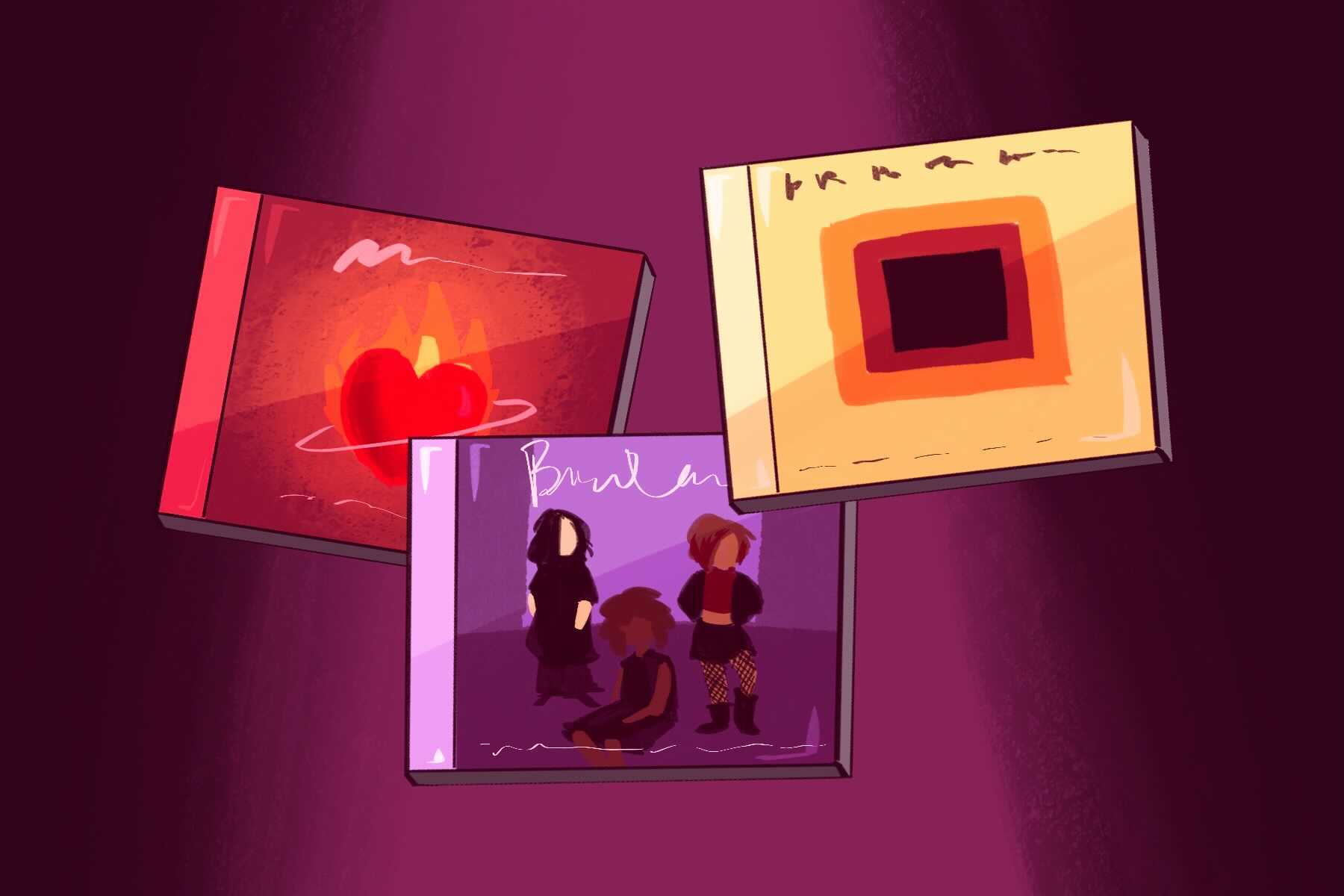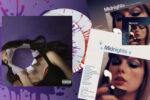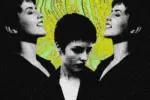Though most are familiar with the phrase “don’t judge a book by its cover,” chances are they’ve never considered how they might judge a musical album the same way. While music is mostly an auditory activity, with the exception of music videos, we still interact visually without even realizing it. Album covers are the images that capture part of the story the artist is trying to tell, acting as a hook to compel listeners to pick up the album and listen to what it has to say. While the cover is obviously the product of an artistic choice, it’s interesting to consider the themes at play that entice us to engage with the album in the first place.
The reputation of some covers precedes the music; even if they haven’t listened to Nirvana’s 1991 release, “Nevermind,” people still probably recognize the naked baby in the pool. Another iconic album cover is the Beatles’ “Abbey Road,” where the group is seen walking across the street in a straight line. What’s notable about this album cover is that it doesn’t announce the album title or the band, and plenty of references in pop culture have been made mimicking the photograph, so many will likely recognize the photo without hearing any of the songs.
https://www.instagram.com/p/CcV1H60Nn92/?utm_source=ig_web_copy_link
The look of album covers has transformed throughout the years, some reflective of the time periods they were released. Nirvana’s debut album, “Bleach,” embraces the grunge aesthetic that started to emerge in the late ‘80s and became popular in the early ’90s. Cream’s album “Disraeli Gears” has a fun, colorful and whimsical cover complete with ‘60s and ‘70s bubble letters and flowers to finish the design that evoked the hippie movement of the time.
Elton John’s ninth studio album, “Captain Fantastic and the Brown Dirt Cowboy,” released in 1975, was reminiscent of another popular trend: using drawings and a monochrome color palette to create a trippy picture. The album cover is known for being extremely busy and can almost be considered an optical illusion; each time someone looks at it, they’re bound to find something new they didn’t see before. Another album cover that captured a similar sense of busyness was the Beatles’ “Sgt. Pepper’s Lonely Hearts Club Band.” And similar to the loudness in “Captain Fantastic,” J. Geils Band’s “Freeze Frame,” released in 1981, features a crazy design that might confuse and also intrigue listeners.
Some bands may change their designs with the times, while others maintain a consistent calling card that belongs to them and them alone. This phenomenon was seen in Weezer’s self-titled debut album; while the album is named after the band, the photo of the group against a blue monochrome background caused fans to deem it “The Blue Album.” The band embraced the moniker and continued the pattern with their following albums, including “The Green Album,” “The Red Album” and “The Teal Album.”
There’s been a shift in designs in recent years, but it of course depends on the genre of the music as well; covers can look vastly different across each style of music. Many rap artists such as Juice Wrld, Lil Tecca and Trippie Redd feature drawings for their album covers. Some alternative rock bands like Queens of the Stone Age and The White Stripes have created darker and more unsettling tones with their unique album covers. Queens of the Stone Age’s “Era Vulgaris,” released in 2007, features two colored and battered lightbulbs, with one wearing a pirate hat and peg leg and the other one smoking a cigarette. While a comedic drawing, the explicit parental advisory sticker hints to listeners that they can’t assume what they’ll hear. The White Stripes’ albums also tend to stand out; a color palette of red, white and black is found on all seven albums, which not only makes them easily identifiable but also emphasizes the quirky rock ‘n’ roll that defines their music.
https://www.instagram.com/p/CWoU1gdMD0a/?utm_source=ig_web_copy_link
It’s interesting to look at newer albums and try to decipher what these pictures mean to the artist and what they should mean to the listeners. In recent years, artists may lean toward depicting themselves in an environment that conveys what they want to communicate through their music. “Sour,” the debut album of Olivia Rodrigo, features Rodrigo on the cover against a purple background with her arms crossed and stickers all over her cheeks and forehead. With a look that can best be described as “sour,” the star sticks her tongue out, and alphabet stickers spelling out the album title stick to her tongue. This album cover is wonderful at conveying what listeners should expect; it’s either a breakup album or it’s an angsty teen album. In either case, it gives us permission to express those emotions because we all know it’s “brutal” out here.
https://www.instagram.com/p/CNnSB-7L80g/?utm_source=ig_web_copy_link
Another powerful album cover was Juice Wrld’s third full-length, “Legends Never Die.” Juice Wrld tragically passed away at the end of 2019, and this album, released posthumously in 2020, conveyed his influence: Even though he had passed, his music and legacy are here to stay. “Legends Never Die” featured a drawing of the star in a colorful tulip field, perhaps meant to resemble heaven or a paradise for the young rapper; in any case, it felt more positive than mournful.
Taylor Swift is also hailed for her meaningful album covers. Swift has dazzled listeners since her early country days and then with her entry into the pop genre starting with “1989.” Her album covers featured her signature curly hair and her name written in cursive until “Red,” which was one of her last country albums. While fans may label each album as a separate “era” reflecting on Swift and where she was in life, they simultaneously serve as a record of how far she’s come since her debut album, both musically and confidence-wise. With Swift beginning to rerelease her albums as “Taylor’s Versions,” the album covers that have come out so far (“Fearless” Taylor’s Version and “Red” Taylor’s Version) seem to exhibit newfound independence, perhaps stemming from Swift regaining the rights to her music.
Album covers distinguish more than just the genre of the music, and they’re certainly more than an aesthetic — they’re a story in their own right. It’s fun to look back to see how far we’ve come since the early days of album art and even more fun to contemplate how our favorite musical artists will express themselves and their stories in the future.

















